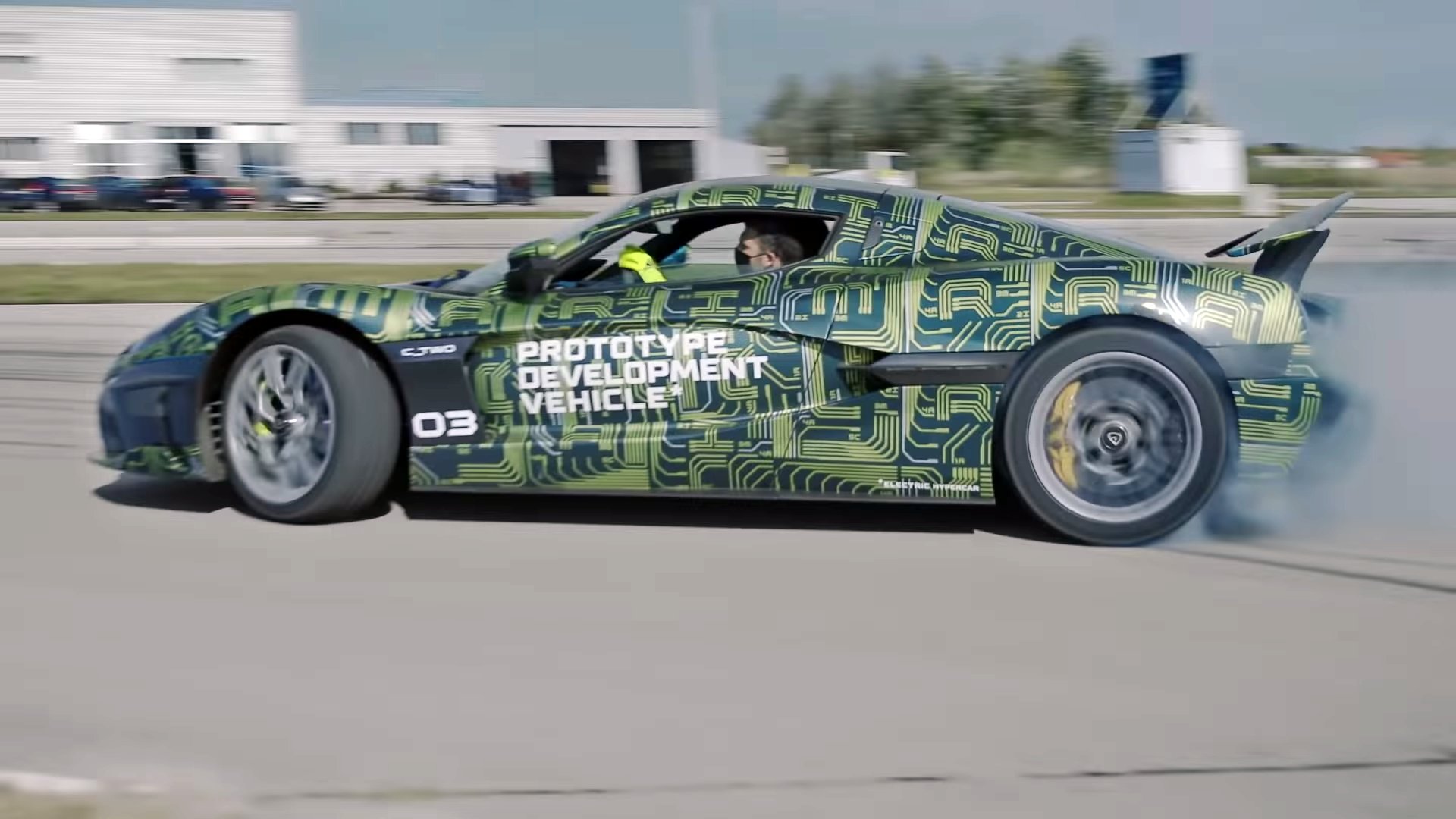

Vehicle development is a complex task, regardless of if we’re talking about entry-level, front-wheel-drive compacts or a million-dollar hybrid tuned beyond GT3-level race car speeds. However, when it comes to pure electric hypercars, I’m always staggered by the number of systems that need to work in perfect harmony to take care of not only the regular car functions, but the needs of a performance battery pack kept at bay by a multi-circuit heat exchanger system. Y’know, the super technical bits.
While Lotus is busy developing its Evija, Rimac is also on its way to certify the C_Two hypercar for worldwide availability. Rimac’s first proper production car has four independent permanent-magnet electric motors providing four-wheel drive and active torque vectoring, as well as a pair of two-speed gearboxes per axle. There are also seven independent liquid cooling systems running on 48 volts to manage over 7,000 cylindrical lithium-manganese-nickel battery cells. Don’t forget the active front and rear diffusers, rear wing, bonnet turning vane and underbody inlets and outlets, eight cameras, six radars, 12 ultrasonic sensors and a Lidar system, plus electronically adjustable dampers and active ride-height control that needs to handle over 4,400 pounds at speeds up to 258 miles per hour. All this with 1,914 horsepower and 1,700 pound-feet of torque on board, resulting in a zero to 60 run in under two seconds.
How does a team calibrate such a thing? In time, sharing a seemingly endless stream of data with the relevant people live via the cloud.



With the C_Two being a road car, Rimac needs to spend plenty of time on public roads as well as race tracks to test components at higher speeds, and Porsche’s Nardò test track in Italy, where next to durability runs, they can also do environmental, dynamic and top speed testing all day long. Unfortunately, with VW Group prototypes running next to Rimac’s, we don’t get to see any of the Nardò action.
What company founder and CEO Mate Rimac, along with the head of powertrain and electrical architecture Matija Renić, can reveal in this episode of Mondays with Mate is that while some C_Two prototypes were built purely for crash testing, some other early cars will never have to face the wall. The third category is C_Twos that are first used for dynamic and systems integration testing, then handed over to the safety team to become one of the 11 cars they need to crash for global homologation.
What’s for sure is that all prototypes have very busy schedules set before they’re built, with engineers and technicians supporting tests both on location and from the factory through Rimac’s live telemetry system. Ticking off items from their list through testing in loops as both hardware and software gets more mature, the company’s head of powertrains puts the C_Two’s testing phase at a very conservative 60 percent right now, noting that the process is speeding up as more and more cars are running in parallel.
Including Pininfarina Battistas.

Got a tip? Send us a note: tips@thedrive.com